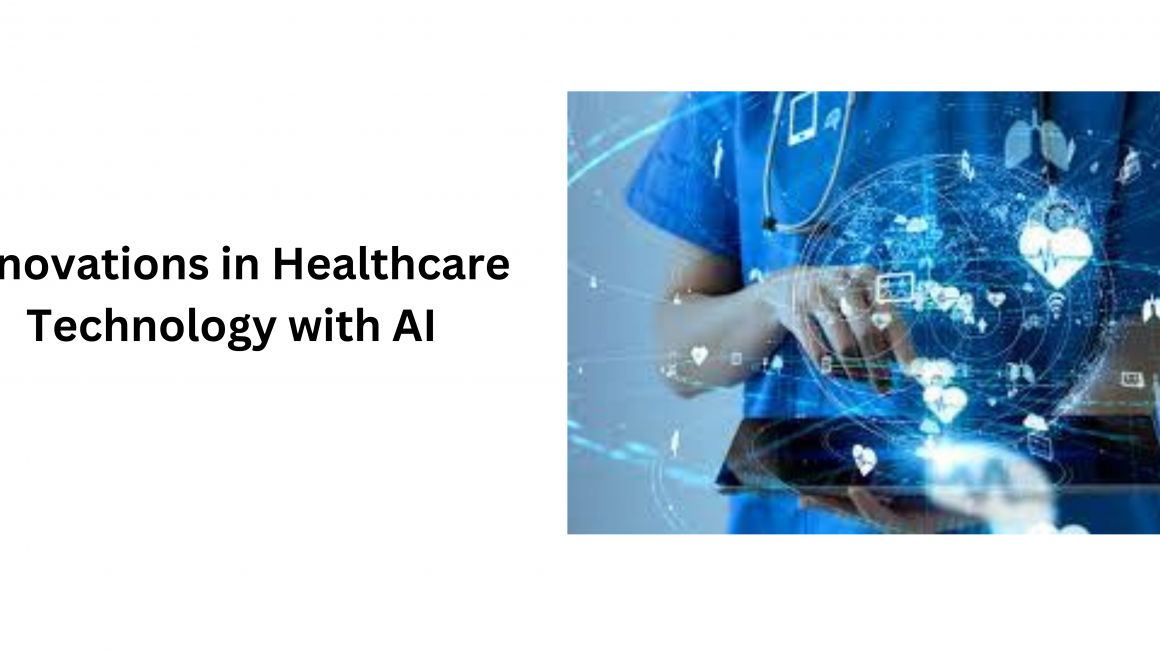Healthcare enrollment is the start of health insurance. It’s an activity that involves picking a health insurance plan and giving information to the insurance company. This information has details about the 834 EDI File in which people will be covered, like their age, the type of coverage they need, and any old health issues they might have.
The aim is to make sure that everyone gets the right coverage for their health needs. It’s a key step to get the perks of health insurance, like getting to have check-ups, cover for medical costs, and safety from high healthcare costs.
Paper enrollment has been the old method. In this system, you’d fill out paper forms with all the needed information. These forms would then be sent to the insurance company, where they’d be checked by hand.
On the other hand, the 834 EDI File is a new, digital way to do healthcare enrollment. ‘EDI’ means Electronic Data Interchange, a system that lets data move from one computer to another without a person being involved. The ‘EDI 834‘ points to the exact type of EDI used for health insurance enrollment.
What is an 834 EDI File?
The 834 EDI File holds a key spot in healthcare. Picture manually dealing with loads of paper sign-up forms. It’s slow, prone to errors, and wasteful. Here, the 834 EDI acts as a lifesaver.
This online file holds all the details needed for health plan sign-up. It replaces old-school paper sign-up, making the process way simpler. The file is sent online to the insurance firm, where it’s dealt with automatically. This saves time and cuts down the risk of errors that might happen with manual data input. It’s like having a digital buddy that takes care of the boring job of data handling and processing.
How Does 834 EDI File Work?
An 834 EDI Transaction begins its journey when a person or firm chooses to sign up for health insurance. They give all the required details, such as personal info, the kind of coverage needed, and more. This data is then packed into an 834 File.
Once made, the File starts its digital voyage. It moves online to the health insurance provider, who gets it on their system. The provider’s system is set up to read and deal with these files automatically. It pulls out the data from the file, checks it, and uses it to finish the sign-up process.
The charm of the 834 File lies in its plainness and productivity. It’s like sending a letter, but instead of paper and a stamp, you’re using a digital file and the internet. And unlike waiting for someone to open the letter and read it, the recipient’s system can access and deal with the data right away.
The 834 File, then, stands as a sign of the digital makeover of healthcare. It shows how tech can make processes quicker, simpler, and more exact. As we go forward, we will delve further into the perks of this system over old-fashioned paper sign-up and how it could shape the healthcare of tomorrow.
What is Paper Enrollment?
Paper enrollment is as simple as it appears. It’s signing up for health insurance using real paperwork. You jot down your personal facts, health records, and the kind of coverage you want on forms. These forms then travel to the insurance company, either by post or hand-delivered. In healthcare terms, these forms let the insurance provider grasp your requirements and give you the appropriate coverage.
Importance of Paper Enrollment in Healthcare
Even with the growth of digital options like the 834 EDI File, paper enrollment still stands firm in healthcare. Why, though? The answer is in its familiarity and simplicity. Paper enrollment, a method in use for many years, sits well with numerous individuals and employers. It lends a concrete sense of accomplishment – you can actually see and feel the forms you’re filling in.
Also, not all have access to the tech needed for digital enrollment. Consider regions with scarce internet access or folks not well-versed in tech. For them, paper enrollment acts as a dependable and reachable method to acquire health insurance.
We mustn’t forget the role of paper enrollment in offering an option for auditing and record-keeping. Owning a hard copy of the enrollment form acts as a backup in the event of any digital glitches.
However, like all things, paper enrollment isn’t flawless. It can eat up time, be subject to human mistakes, and be less swift than digital methods. That’s where up-to-date open enrollment solutions, like the 834 EDI File, are stepping in to propose a more effective alternative.
Comparing 834 EDI File and Paper Enrollment
The Process
To kick off our comparison, we’ll first break down the steps each method uses.
The process for paper enrollment is simple. You fill out paper forms with the needed details and then send them to the insurance company. This method is easy and direct but needs a hands-on approach. Forms must be filled in accurately, checked for mistakes, and then mailed or handed over to the insurance provider.
Conversely, the 834 EDI enrollment process is slicker. The individual or employer hands over the needed details. These are then turned into a digital 834 EDI. This file is sent to the insurance company online, where it’s processed on the spot.
The main difference here is in the level of hands-on work. While paper enrollment needs physical work and may have errors, the 834 EDI enrollment taps into technology to cut down hands-on work and to up accuracy.
The Efficiency
Next, let’s talk about speed. The world is fast, and healthcare enrollment needs to keep up. Paper enrollment can be slow. Once the forms are mailed, they need to be put into the insurance provider’s system by hand. This can take a few days, or even weeks, based on how many enrollments need processing.
In contrast, the 834 EDI File wins in terms of speed. As the files are sent online, they hit the insurance provider’s system almost right away. These systems can process the files on their own, making the time taken much less than paper enrollments.
Also, the 834 EDI, which meets HIPAA EDI 834 standards, assures safe and swift data transfer. It’s like having a fast train at your service, as opposed to a slow cart.
While the 834 EDI may win in terms of speed, picking between the two methods often comes down to personal choice, ease, and access to needed tech.
The Benefits of 834 EDI Files
First, the 834 EDI Service Providers introduce a level of ease missing in paper enrollment. This digital document can be formed and sent with no need for hard forms or mail services. It’s a time-saver that fits snugly in our tech-driven era.
Following that, the 834 EDI greatly cuts down the odds of human errors linked with manual data input. Automating the process promises more precision, which paves the way for fewer problems later. This is key, considering the value of accurate details in healthcare enrollment.
On the topic of security, the 834 EDI takes the cake. The digital files are ciphered and securely transmitted in line with HIPAA rules, promising enhanced safeguarding for sensitive data compared to typical paper forms.
Cost savings is another key perk of the 834 EDI. Doing away with hard forms, postage, and manual data entry can lead to substantial savings for healthcare providers.
Lastly, the 834 EDI aids sustainability. In a world becoming more aware of its environmental footprint, shifting from paper forms to digital files helps cut waste and preserve resources.
The Downsides of 834 EDI Files
The first bump with using 834 EDI Files is the call for technical know-how. To work with these files, you need a firm grip on the EDI rules. This can be a tough nut to crack for newbies. Staff might need coaching to get their heads around the system. And this can chew up time and resources.
Next, rolling out an 834 EDI File system can take a chunk out of your budget. Sure, the system promises long-term savings, but the setup can cost a pretty penny. This takes in the cost of buying the needed software, gear, and possible updates to your existing IT setup.
Another bump is that 834 EDI Files, like any digital system, are open to tech issues. This could stretch from software bugs and network link issues to possible cyber threats. Although these risks are lessened by sticking to HIPAA security rules, they are still points to keep in mind.
Last, shifting to a new system might hit a wall with staff who are happy with paper enrollment. This human element can sometimes be the hardest to beat.
To tackle the above challenges, firms can pair up with trusted EDI Solutions providers. These providers dish out training and support to help staff get to grips with and use the 834 EDI system effectively.
The Potential Downsides of Paper Enrollment
Paper enrollment, however, has its own set of hiccups. The main snag is the manual aspect of the process. Every form has to be hand-entered into the system, opening up the possibility of errors. Correcting these mistakes can be both expensive and time-sapping.
Moreover, handling paper forms can be quite a task. They must be kept secure, are prone to wear and tear or misplacement, and hunting for specific forms can be a time-draining affair.
Also, we can’t turn a blind eye to the environmental cost of paper-based systems. In a world increasingly leaning towards sustainability, paper forms add to the problem of deforestation and waste. Finally, the requirement of physically submitting paper forms can be a hassle.
EDI Solution Providers pave the way for a smooth shift from paper to digital, serving a sturdy, productive, and future-ready approach for healthcare enrollment. In the next segment, we will wrap up our findings, aiding healthcare providers to make an educated choice about their enrollment systems.
Key Differences Between 834 EDI File and Paper Enrollment
The 834 EDI File and paper enrollment differ in their very nature. The EDI File is a digital format that speeds up the enrollment process. Paper enrollment, on the other hand, uses physical forms that need manual handling.
Speed and efficiency are also notable differences. The EDI File makes data transmission quick and easy, leading to faster enrollments and updates. Paper enrollments, however, need more time for manual entry and checks.
Accuracy is another area where these two stand apart. The EDI File reduces the chances of human error, while paper enrollments can often lead to mistakes during form-filling or data entry.
Storage is another area where they vary. EDI Service Providers offer secure, easy digital storage for EDI Files. But, paper enrollments need physical space and are at risk of damage or loss.
Lastly, their environmental impact is significantly different. The EDI File, being digital, is a greener choice. Paper enrollments, on the other hand, contribute to paper waste.
Implications of These Differences on Healthcare Enrollment
These differences between the EDI File and paper enrollment have notable impacts on healthcare enrollment. The speed, efficiency, and accuracy of the 834 EDI can boost productivity in healthcare facilities and improve patient experiences.
The EDI File also offers long-term cost benefits, with less need for physical storage and manual data handling. Plus, its environmental friendliness aligns with the healthcare sector’s increasing focus on sustainability.
However, we must remember that moving from paper to digital demands initial investment and training. Here, EDI Providers can be invaluable, offering necessary support and guidance.
Making the Right Choice for Your Healthcare Enrollment
When looking at the 834 EDI File and paper signup, several things matter. We’ll chat about the main ones to help you make a smart choice.
First, think about how many signups you deal with. If your health body manages a lot, the quick and slick EDI File could be a big help.
Next, think about getting it right and cutting down on errors. If mistakes in your current signup process are causing issues, the 834 EDI could offer a fix. It cuts down human error, giving more correct data.
Also, think about the resources and set-up you have. Moving to a digital system like the 834 EDI needs investment in tech and training. If your body has the resources for this, it could be a good step.
Another thing to think about is the impact on the environment. If your body cares about being green, the paper-free EDI File is a great way to cut down your environmental mark.
Recommendations for Different Scenarios
With the above things in mind, let’s look at some advice for various cases.
For health bodies dealing with a lot of signups and wanting to cut down on errors, the 834 EDI looks like the best option. Electronic Data Interchange Providers can help these bodies in putting in and managing the EDI File.
For bodies with not many resources or those working in areas with little digital set-up, paper signup might still be the most practical fix. However, they should look for ways to make their manual processes better and cut down on errors and slow parts.
Bodies that care about being green should really think about the 834 EDI File. Not only does it fit with green goals, but it can also make things more efficient and right.
Lastly, if your body looks after a group that likes or needs paper signups, think about keeping both systems. This way can please everyone, though it may need more resources to handle both processes.
Conclusion
So, what’s the top pick? The answer isn’t clear-cut. It’s not about one being clearly better but depends on your healthcare group’s unique needs and resources.
If your group is tech-savvy, deals with many enrollments, and supports sustainability, the 834 File might be your best bet. In these cases, teaming up with EDI Outsourcing services or EDI Companies in the USA could ease the shift to the EDI File system.
But, if your group has fewer resources or works with people who prefer paper enrollment, sticking to a paper-based system could be a smarter pick. You might even think about a mix of both the EDI File and paper enrollment to cater to all needs.
So, both the 834 EDI File and paper enrollment have their places in healthcare enrollments. The trick is knowing your group’s specific needs and picking the option that fits best.
In the end, no matter your pick, the aim should always be a swift, correct, and user-friendly enrollment process. If you’ve got questions or need more help deciding, please feel free to get in touch with Toporgs. We’re here to help guide your journey to better healthcare enrollment processes.
FAQ’s
What is an 834 EDI File?
The 834 EDI File is a common format for sharing healthcare enrollment info electronically. It holds key details about the person enrolling, such as their background, health history, and insurance data. It’s widely used because it can handle a large amount of data fast and correctly.
Why is the 834 EDI File Important in Healthcare?
The 834 File is important in healthcare for its speed and accuracy. It helps to make the enrollment process quicker and neater, lowers the chance of mistakes, and cuts down the time and cost linked to using paper. It’s also great for handling a lot of data, which is perfect for big healthcare organizations.
What are the Challenges with 834 EDI Files and How to Overcome Them?
The 834 EDI File method has many benefits, but it also has its own problems. These include the need for money upfront for tech and training and potential issues with data security. But, these problems can be solved with the right planning, investing in secure systems, and teaming up with experienced EDI service providers.
What are the Key Differences Between the 834 EDI File and Paper Enrollment?
The main differences are in how they process data and how users experience them. TheEDI File method is digital, quick, correct, and efficient, but it needs tech resources and training. Paper enrollment, on the other hand, is easy and wide-reaching but can be slow and more likely to have errors.
How to Choose the Right Enrollment Method for Your Healthcare Needs?
Picking the right enrollment method is about your specific needs and situation. You should think about how many enrollments you have, what resources are available, how comfortable your target audience is with digital, and your sustainability goals.




